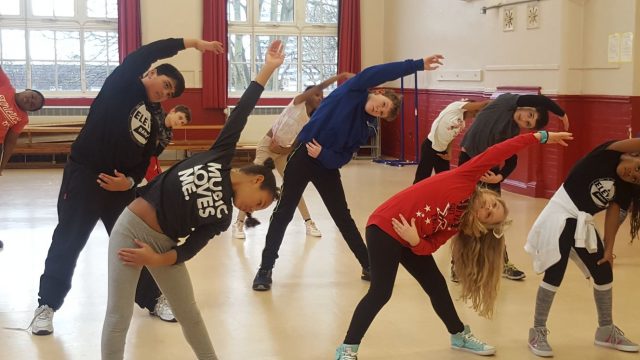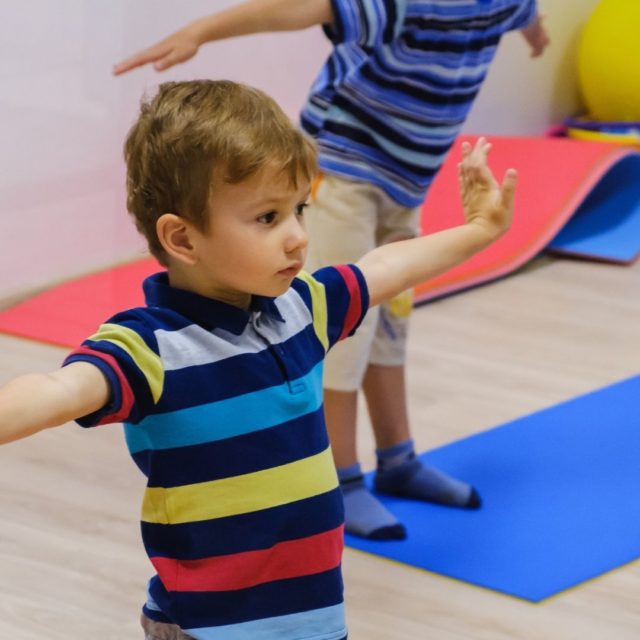“But I just want to dance!”
Lockdown has undoubtedly had an impact on everybody’s fitness including that of our children. Children are usually naturally active in their day to day activities – running, jumping, skipping and rolling around with their friends in the playground, park or soft play, plus taking part in PE and extra-curricular clubs including dance. However due to restrictions over lockdown, even if your child did continue to exercise or participate in online dance classes, their day to day activity was still significantly reduced and it is most likely that any training they did do was not of the same duration, intensity or frequency as it was pre-lockdown resulting in lower fitness levels across the board (Your child isn’t alone!)
The pandemic has been a strange and new situation for everyone, whether you went running every day or sat on the sofa for 6 months binging on Netflix, nobody is judging, people cope differently! We need to accept our fitness levels are what they are RIGHT NOW and that we might not be in the best place physically at the moment. Good news though – if we know where we are at we can start to make positive changes and grow into stronger dancers and humans.
Why is fitness important for dancers in general?
- Dancer’s bodies are their instrument – physically, psychologically and artistically so we need to look after them
- Dancers are athletes – huge demands are placed on our bodies; we need to be fit enough to cope with these demands
- Good fitness reduces the risk of injury and increases the chance of a long career
- If you are physically fit you can focus more on artistry, performance and technique
- You don’t want to be gasping for breath or lacking energy in performances
- You want to be able to survive a dance class and not be the one to come out dying!

Yep, we’ve heard it already! – “But I just want to dance!” Here’s why jumping straight into an all-out dance class after lockdown might not be a great idea
We know your child has been off for 6 months and all they want to do is shake a leg like they used to do – in the studio. We know they’ve been waiting for this moment for what seems like forever. We know the thought of doing fitness right now probably fills them with dread and they are frustrated we aren’t banging it out even 1 time let alone 1 MORE time. WE GET IT! What we don’t want to get are injuries. Here are the reasons your child shouldn’t just come out of lockdown and dance without building up and/or supplementing their training with fitness:
- Their bodies will naturally remember what they could physically do pre-lockdown
- Their minds will naturally remember what they could physically do pre-lockdown
- However, they will feel frustrated because their bodies aren’t physically strong enough. When they look at themselves in the mirror or on video attempting to do what they could pre-lockdown, it won’t look the same, it won’t feel the same because their stamina, strength, mobility and flexibility may not be as good as they were before
- Most children have been dancing in smaller spaces over Zoom during lockdown meaning their movements probably had to be adapted and made smaller. They need to re-learn how to extend their movements again
- Their ability to recover will be lower and they may experience DOMS (Delayed onset of muscle soreness) if they go straight into dancing like they did before lockdown
- Their body may have changed over lockdown. They may have had a growth spurt and grew taller or gained or lost weight. Even if they do look the same, their body composition could have changed. Point being their bodies are different so it will feel different dancing in their new bodies and so they need time to adjust to them and strengthen them.

What should my child be doing to get ready for, or supplement their dance training outside of class?
A range of training methods will ensure your child becomes fit enough for dance in all areas and will reduce their chance of injury. It will mean they can dance with more ease. If we as dancers develop good strength, stamina and flexibility as well as neuromuscular co-ordination we can carry out the physical demands of dance without needing to think about them and can instead focus on the technique and performance/artistic/expressive elements instead. Below are various training methods, try to get all of them, or at least a range of them into your child’s training schedule each week to re-build their fitness and help them fulfil their potential as a dancer and optimise performance:
- Aerobic training – Moderate intensity exercise for around 20-45 minutes per session (Running, swimming, cycling, skipping, aerobics classes such as Zumba)
- Anaerobic training – High intensity all out exercise in short bursts interjected with rest or recovery periods. The aim is to increase your heart rate to near max then let it recover before going again. 10-20 minutes per session (Sprints, jumping/plyometric exercises, fast skipping, HIIT classes)
- Strength training – Body weight exercises are best for children while their bodies develop. Resistance bands can also be used. Aim to do as many repetitions as you can while maintaining good form, then have a rest of about 30 seconds to two minutes. Aim for 3-5 sets of each exercise. Include a variety of pushing and pulling exercises in each session to work the whole body and avoid muscle imbalances. (Push ups, sit ups, plank, leg raises, lunges, squats, pull ups, dips, etc as well as Pilates and yoga which help strengthen the body from the core)
- Power training – jump and plyometric training. This can be as simple as trying to jump as high as you can or as far as you can. You can also do this with hops. Can you jump off and on a box, or a wall? (make sure it’s safe first)
- Flexibility training – There are different types of stretching, however the best way to improve flexibility is to make sure you are physically warmed up first (after class or a workout is the perfect time) then hold each stretch for 30 seconds to 2 minutes. Try to isolate the muscle you are stretching and remember to relax and breathe (don’t hold your breath)
- Dance training – Yes, supplement your dance training with more dance training! Go through what you’ve learned in class during the week. Go through the moves you might remember from classes before lockdown. Take extra classes. By doing so you will build up your neuromuscular co-ordination. Your muscle memory will begin to kick in and your body will get used to these movements and positions again over time. You know that saying “Use it or lose it?” It’s a thing! Just go slowly and build up over time
When our bodies get used to an activity or exercise, we find it easier, our bodies ache less – we adapt. In order to keep progressing and getting fitter we need to apply the overload principle. This keeps our bodies working hard and is how we make improvements happen. You can increase the duration, frequency or intensity of the activity or exercise to apply the overload principle. Only do this every 4 weeks or so, or when you feel like you could push more and that the activity or exercise has become too easy. Only increase 1 element of overload at a time though to avoid overtraining and injury.

How Elevate Arts are integrating fitness into classes this term
We understand everyone has had different experiences and struggles during lockdown and we are putting absolutely zero pressure on our students to catch up with their fitness or technique. It will happen naturally over time, so long as they take part in class regularly. It is ok and completely normal for your child to feel like their dance ability and fitness has gone down. We will work together at a slow pace to bring everyone back up to where they were pre-lockdown and beyond!
We will be carrying out regular fitness assessments and incorporating fitness elements into our warm up each week. As everyone will be starting at a different level, we will carry out assessments so exercises can be tailored to individual needs and we will use the overload principle every few weeks, or as individuals are ready for it, to up the ante and keep our students’ fitness improving. We will monitor and ask how our young dancers are feeling and adapt our content accordingly. The aim is not to be better or fitter than anyone else, but for them to notice personal improvements as the weeks pass by and the original exercises getting easier.
When breaking down technique, we will keep it technically challenging without being too physically demanding. Class will also take on a slower pace. There will be more rest periods in between the high intensity drills and combos, we will limit the amount of jumping and be pay attention to how we transfer our weight safely to avoid injury.
“Life is a marathon not a sprint”
Elevate Arts, an urban dance school, was founded in 2015 by Lucy Loughlin in Acton, West London.



